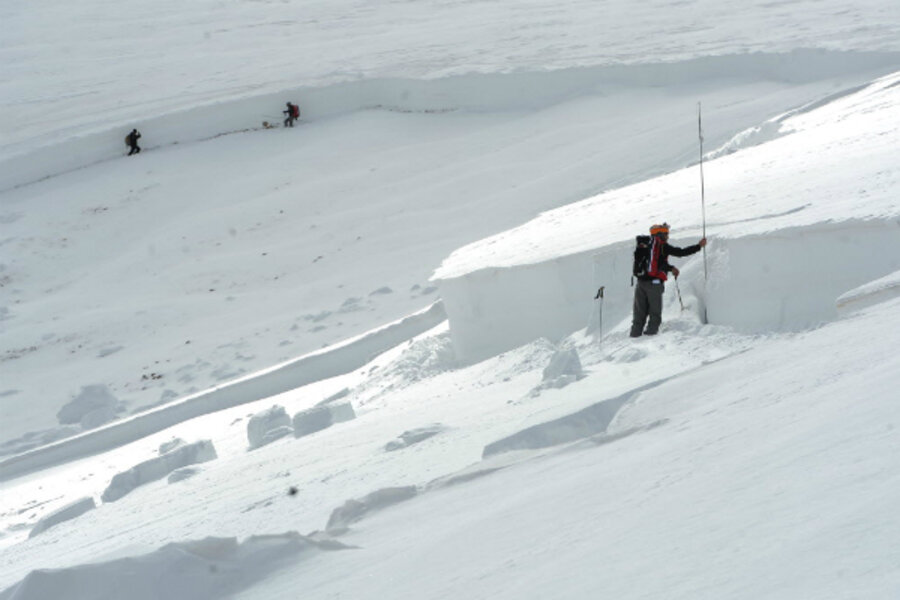Colorado avalanche: Unstable snow is a peril, even for the experienced
Loading...
| LOS ANGELES
The death toll from avalanches for the current US snow season mounted to 24 over the weekend after Colorado experienced its worst single accident since 1962. On Saturday, five snowboarders were buried under a slab of snow some 600 feet wide by 900 feet long near the Loveland Pass ski area.
While all five men who perished were considered skilled – indeed, they were participating in an avalanche-awareness fundraiser for the Colorado Avalanche Information Center (CAIC) – the incident spotlights what many see as a dangerous trend: a precipitous rise in less and less experienced snowboard and ski tourists in high-risk back-country areas.
“You can buy a lot of new cool gear these days,” says Andy Wenberg, the sales and marketing director at Back Country Access, a snow equipment store in Boulder, “but if you don’t know what you are doing, that is not going to help you very much.”
The spike in avalanche-related deaths in unregulated back-country zones began some two decades ago, according to CAIC. Prior to 1990, the number of avalanche deaths hovered well below 10 per year. Since then, avalanche deaths have averaged 24 annually. But the 2011-12 total rose to 36.
Now, as more sophisticated and easier-to-use gear has become available, “we have begun to see a lot less experienced snowboarders and skiers in these areas," says Mr. Wenberg.
The explosion of extreme sports, as well as heightened television coverage of remote areas, has dramatically increased their attraction, adds Wenberg. “People see these areas that don’t have any signs or rules and it’s very appealing,” he says. “People have gotten very tired of waiting in long lift lines and fighting crowds.”
But even the pros can be caught off-guard by the unpredictability of snow and weather conditions. Forecasters have been cautioning snow enthusiasts that this is one of the worst avalanche seasons in 30 years, primarily due to the late snow on top of an unstable snow pack.
The CAIC forecast for the area in this weekend’s disaster on Saturday morning cautioned that there were "deep persistent slabs and fresh wind slabs" on the north, east, and southeast aspects near and above tree line.”
Recent heavy, wet snow combined with high winds in the back country have raised the avalanche danger in the Central Rockies at a time when snowpacks are usually stabilizing – a development that makes them safer for snow tourism.
The men who died near Loveland were all equipped with safety beacons, points out Wenberg. But “even the best training can’t stop mother nature from surprising you," he adds.
Wenberg notes that his store spends more money on training and education materials than any other category of gear. He cautions that being prepared is more than getting the best shovels and backpacks. The best advice he has for those thinking of heading into the adventure of backcountry snow touring is: “Take at least a single, level-one class first.”
Avalanches come in two categories: slab and loose-snow, according to the CAIC website. But, while the loose powdery snow may seem more threatening, 96 percent of all avalanches in the US come from slabs of snow moving unexpectedly. It may surprise many novices, “but even the weight of a single person can trigger a slab avalanche," says Wenberg.







